Info
Subfamily: Panicoideae
Genus etymology: Andropogon = "man's beard" [Greek] refering to the long hairs (bearded) pedicels
Species etymology: virginicus = from Virginia [USA], although this is found across much of North America
Photosynthetic type: C4 (warm season)
Nativity: naturalized - accidental
First recorded in Hawaiʻi: 1924
Legal status: HDOA - noxious weed
Map
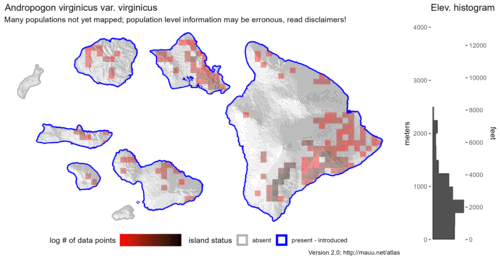

Inflorescence
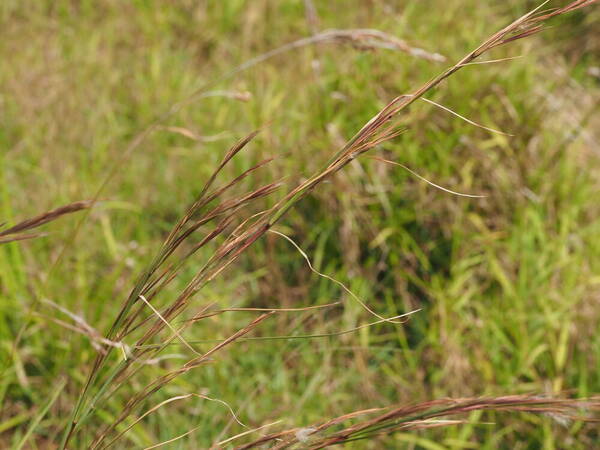
Plant
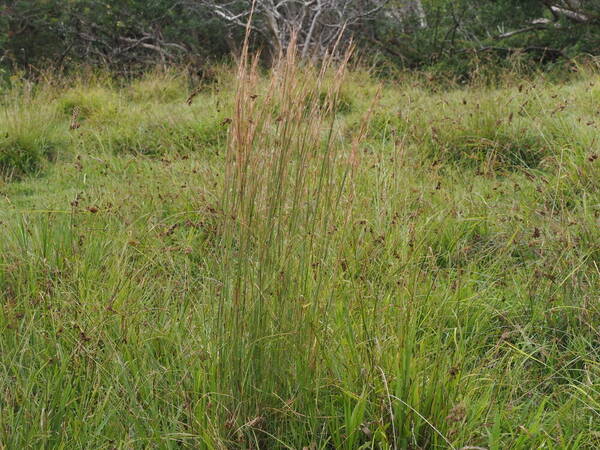
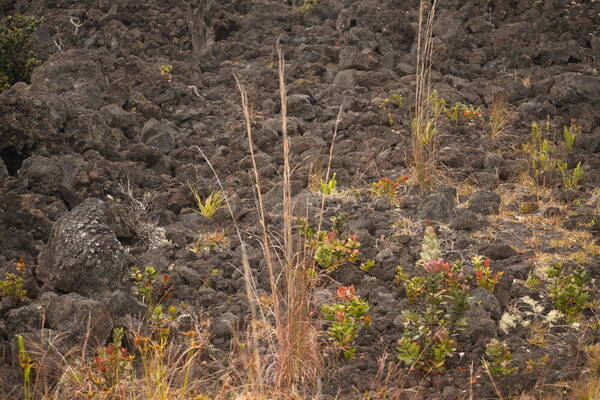
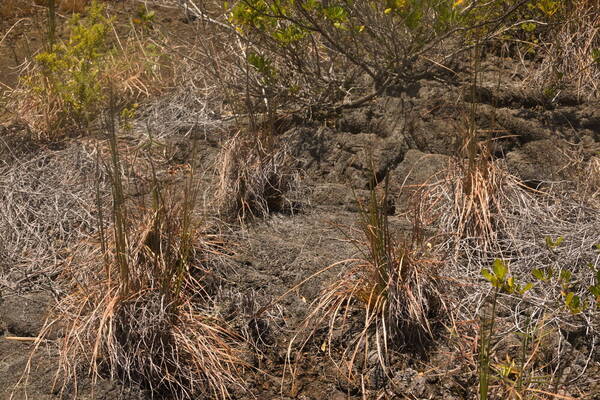
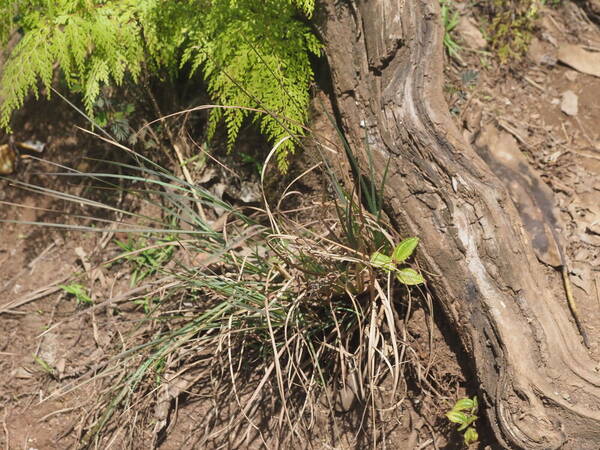

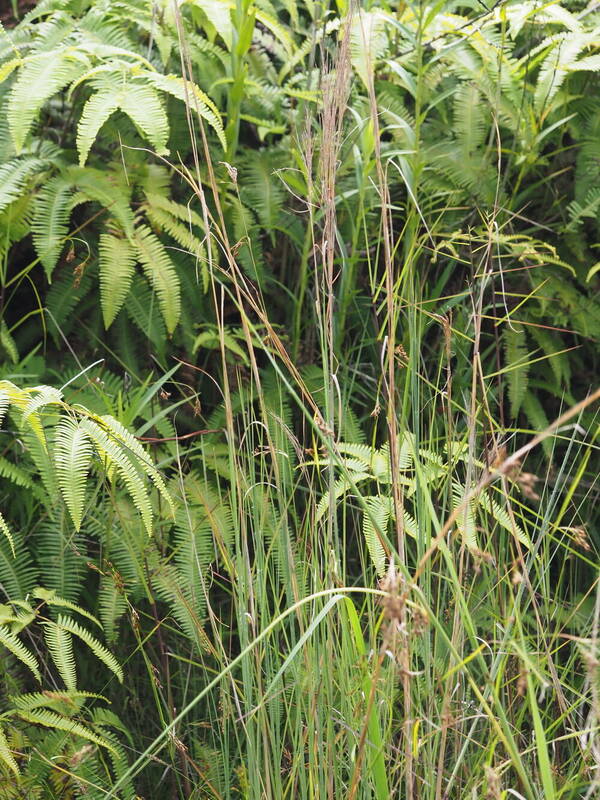
Habit
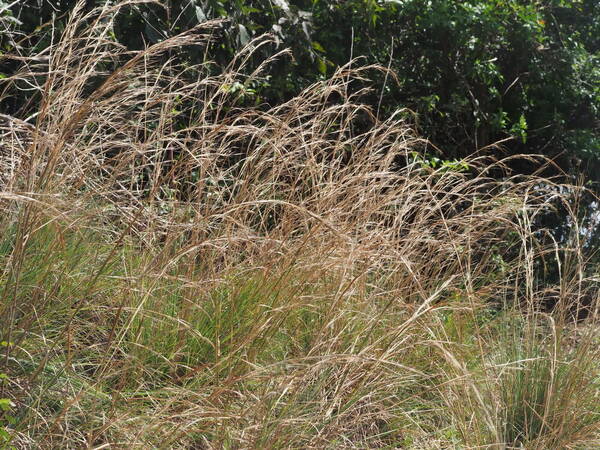
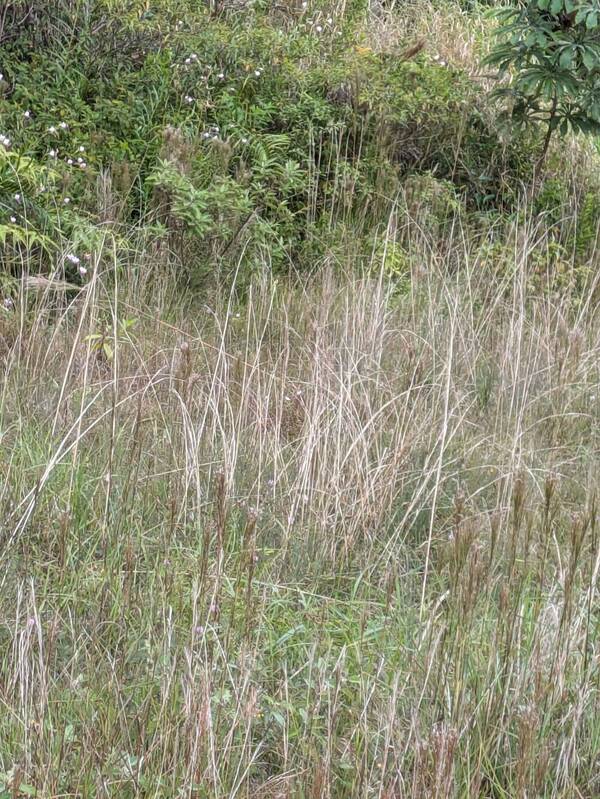
Spikelets
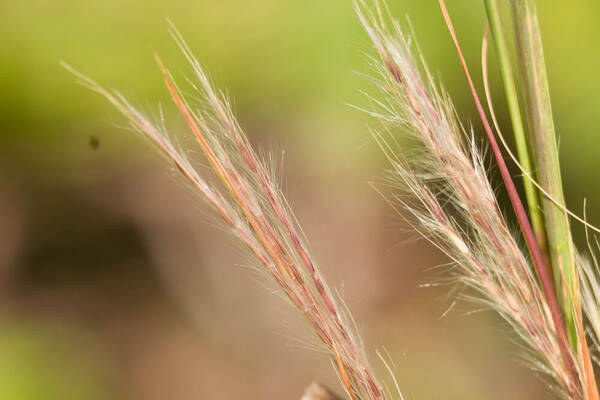

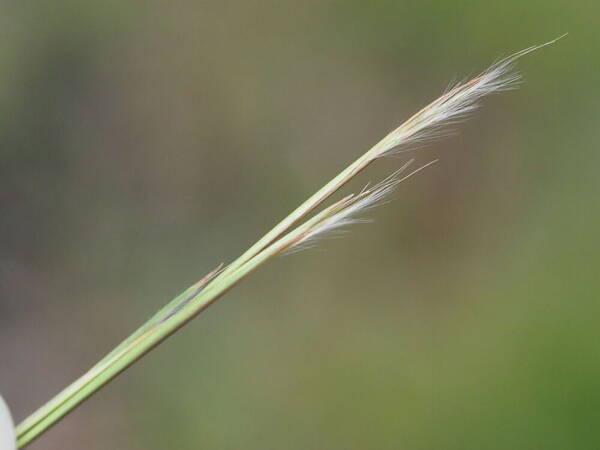
Landscape
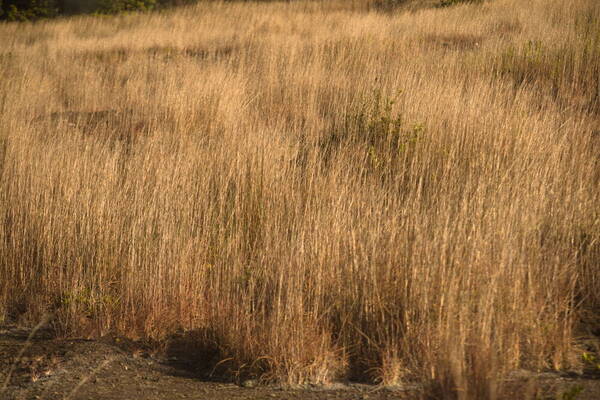
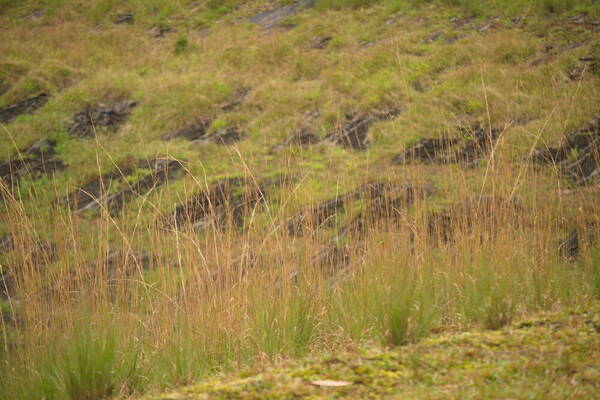
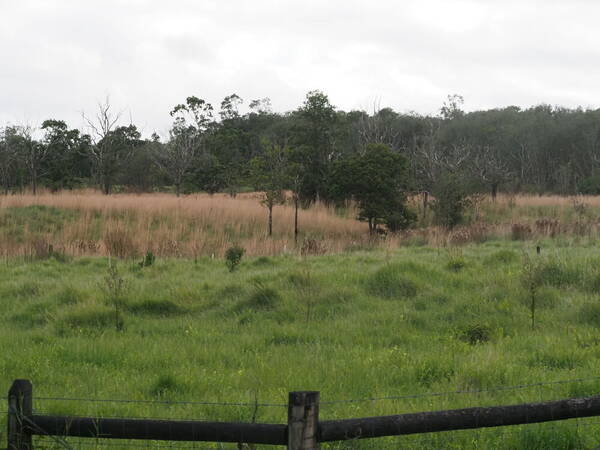
Collar
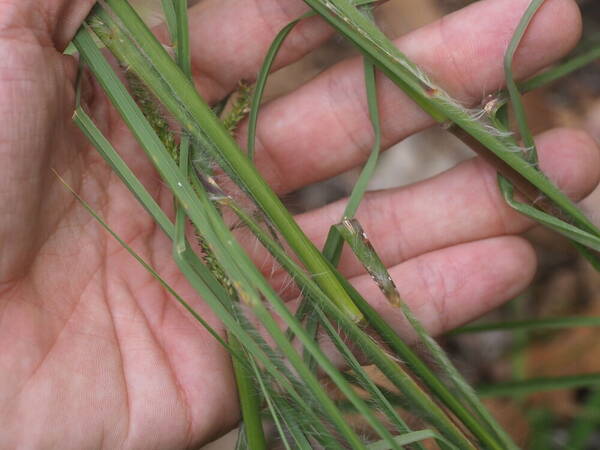
Culm base
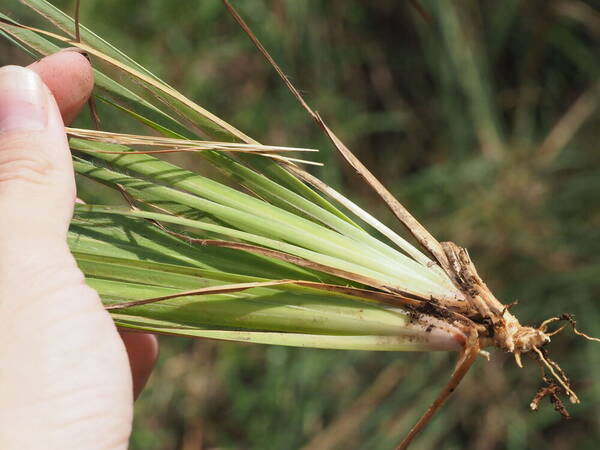
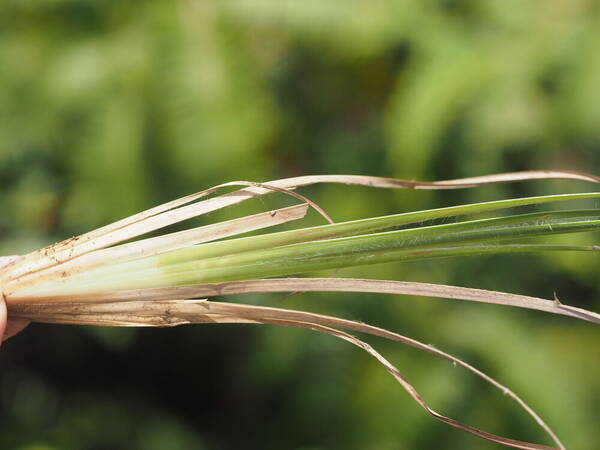
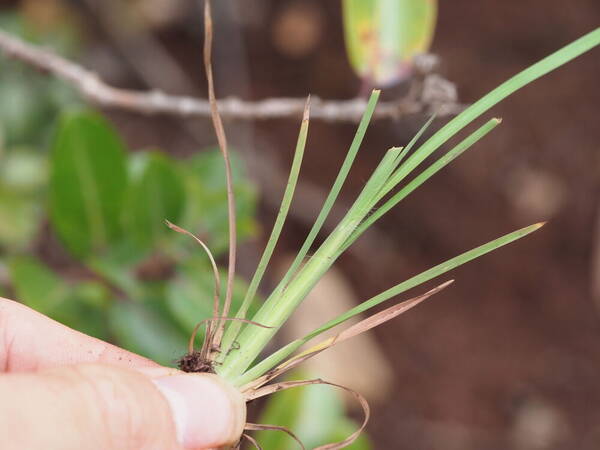
Description
Plants cespitose, dense and cylindrical to obpyramidal above. Culms 40-210 cm; internodes glaucous or not; branches erect to ascending, usually straight, sometimes arching. Sheaths usually smooth, rarely some¬what scabrous; ligules 0.2-1 mm, ciliate, cilia 0.2-1.3 mm; blades 11-52 cm long, 1.7-6.5 mm wide, smooth and glabrous or sparsely to densely pubescent with spreading hairs. Inflorescence units 6-195 per culm; subtending sheaths (2.1)3.1-4.6(6.7) cm long, (1.7)3-3.8(5.6) mm wide; peduncles usually (1)4-6(30) mm, with 2-7 rames; rames (0.5)1.7-2.8(4.4) cm, sometimes exerted at maturity, pubescence sparse basally and increasing in density distally within each internode. Sessile spikelets (2.6)3.5-3.8(4.7) mm; callus hairs 1-3 mm; keels of lower glume usually smooth below midlength, scabrous distally; awns 6-21 mm; anthers 1(3), 0.6-1.5 mm, yellow or purple. Pedicellate spikelets vestigial to absent. 2n = 20.
(Description source: Barkworth, M.E., Capels, K.M., Long, S. & Piep, M.B. (eds.) 2003. Flora of North America, north of Mexico. Volume 25. Magnoliophyta: Commelinidae (in part): Poaceae, Part 2. Oxford University Press, New York. 783 pp http://floranorthamerica.org/Andropogon_virginicus )
Cespitose perennials growing in dense tufts, yellowish at base; culms erect, 50-100 cm tall, branching freely from the middle and upper nodes, internodes compressed, up to 4 mm in diameter, hollow but partially pithy, glabrous. Leaves primarily basal; sheaths closely overlapping, strongly keeled, margins hirsute; ligule a ciliolate membrane, 0.5-0.7 mm long; blades up to 35 cm long, basal blades longest, 2-5 mm wide, hirsute near base and on margins of lower surface, lower surface strongly keeled. Inflorescence branches several from each of the middle and upper nodes, slender and wiry, erect or ascending, each bearing several peduncles that arise in the axils of bladeless spathes, peduncles less than 10 mm long, rachis internodes 1.5-3 mm long, pedicels 3.1-5 mm long, rachis internodes and pedicels densely ciliate with silky hairs, these up to 8 mm long; sessile spikelets narrowly ovate, 3.8-4.1 mm long, acute, pedicellate spikelets rudimentary or absent; first glume flattened, the 2 lateral keels scabrous-ciliate near apex, margins inflexed and covering edges of second glume, the second glume 3.5-3.6 mm long, keeled, 1-nerved; first (sterile) lemma hyaline, 3-3.5 mm long, conforming in shape to first glume, upper (fertile) lemma hyaline, narrow, 2.5- 3 mm long, ciliate, apex awned, the awn 11-17 mm long, twisted near base; stamen 1. Caryopsis brown, ovoid, 1.9-2.4 mm long. [2n = 20.]
(Description source: O’Connor, P.J. 1990. Poaceae, pp. 1481–1604. In: Wagner W.L., Herbst D.R. & Sohmer S.H. (eds.)., Manual of the flowering plant of Hawaiʻi. Vol. 2. University of Hawaii Press & Bishop Museum Press, Honolulu )